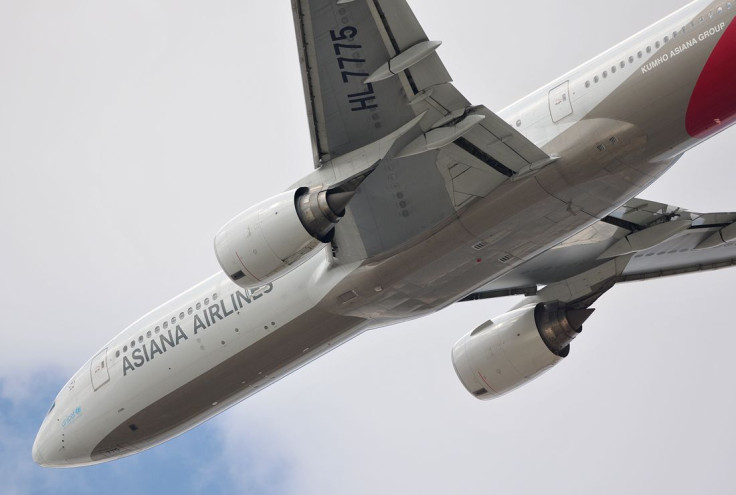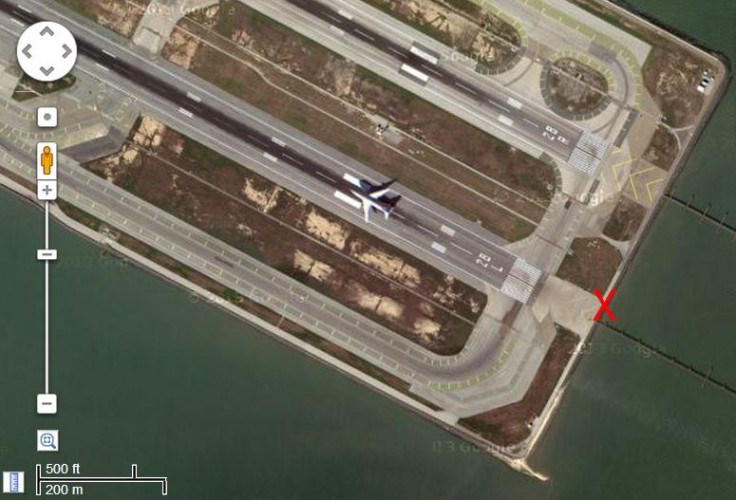San Francisco Plane Crash: Asiana Airlines 214 Hit Ground 1,000 Feet Before Touchdown Point [PHOTO]

When Asiana Airlines Flight 214 approached for landing at San Francisco International Airport on Saturday morning, the tower directed it to Runway 28 Left. To many passengers, that's a scary landing, with the plane coming in low over the water of San Francisco Bay before putting its wheels down on the 11,381-foot (3,470m) strip of asphalt -- more than enough room to stop even the biggest, heaviest passenger jets in a pouring rain.
Scary maybe, but in fact perfectly safe.
For a modern, well-maintained Boeing 777 operated by an airline based in the developed world and flown by expertly trained crew, on a clear day, San Francisco's 28L -- which gets its name from being oriented to 280 degrees on the compass, almost due west, and being the leftmost of two parallel runways -- should be a piece of cake.
Yet, on Saturday, for the crew of OZ214 from Seoul, it was anything but. That routine approach in good weather conditions became a crash landing that took the lives of two people, injured hundreds more, resulted in the horrendously expensive writeoff of a relatively new jet that goes for $258 million new, and shut down the tenth-busiest airport in the United States for hours. It was also the first fatal crash of a big commercial jet in the U.S. since 2001.
Mere hours from the accident, it's way too early to speculate, even for experts. The National Transportation Safety Board has swiftly opened an investigation; the "black box" containing all flight data and the cockpit voice recorder will be easily recovered; it's virtually certain that the inquiry will find the causes of the accident. Training procedures will be updated if needed, modifications to the airplane will be mandated if it turns out the 777 was at fault, and crashes like Asiana 214 will become even rarer.
But there's one thing we know for sure: The plane was dramatically short of the runway and way too low when it hit the seawall at the edge of the water. The map below shows the point of impact, deduced from television images of the aftermath and marked with a red X, and the earliest point on Runway 28L where planes touch down: That's where the black rubber marks made by aircraft tires begin.

It's entirely up to the crew's discretion to decide where to touch down, and with its ample room runway 28L affords pilots the luxury of going long. But no runway will compensate for coming up short. And the Boeing was 1,000 feet (305 meters) short, as the scale at the bottom of the image shows. The pilot flying Asiana 214 on Saturday likely realized that mistake, and then pulled the nose up and presumably increased engine power to go around and try a second time (a normal procedure that happens often and is rehearsed in simulators) -- but a Boeing 777-200 is 209 feet (64 meters) long, and those giant dimensions mean that pulling the nose up drastically will result in a tail strike.
In fact, Boeing (NYSE:BA) recommends, as can be seen in Figure 1 in this publication by the company, a maximum nose-up angle of 9 degrees on takeoff. When close to the ground, anything steeper than that will hit the tail. Based on what we know at this early stage, that may well be what happened in San Francisco.
© Copyright IBTimes 2024. All rights reserved.






















